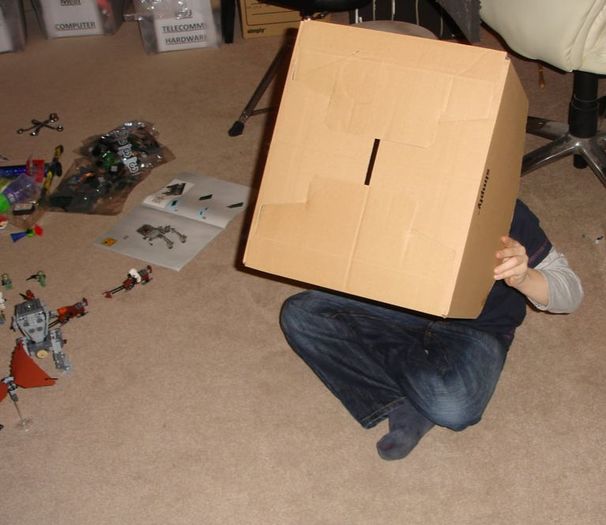|
Episode 103 - What's In The Box? The Thursday Thesis - 13/06/2018 Of all the things a state’s education system has to be good at, top of the list has to be imposing conformity, suppressing new ideas and discouraging critical thinking. No wonder Tony Blair was a big fan of Education. But when you impose conformity and suppress new ideas, you inevitably kill imagination and murder Play. And when The Right Way to do something is dogmatically enforced, and when non-compliance is punished, children shut themselves down to avoid negative consequences. That’s what school does to kids. An American study found that 98% of pre-schoolers described themselves as highly creative – that’s exactly what we’d expect if we watched a bunch of kids for any length of time: they have no limits on their play or their imaginations. But put the little ‘uns into the sausage machine of school and watch their creativity die down, down, down...until there is little more than a faint glow. Then, when the US school system finally released the researchers’ cohort, the percentage describing themself as highly creative had plummeted to a miserable 5%. This is not good. But what’s worse is that the majority of the now-uncreative kids had a paper trail of documents, reports and exam certificates that proved – categorically and absolutely – that they were not creative. Armed with such undeniable evidence and a negative belief about themselves they will probably shy away from anything related to creativity. I see a lot of this legacy of education in my work. Time after time, guitar students and coaching clients tell me that they are not the creative type; they tell me they’ve never written or created anything since they were kids. Obviously, I’m not going to accept that! So, here’s my favourite game to get playfulness and creativity back on the menu – it’s called “What’s in the Box?” and it came from Patricia Ryan Madson, of Stanford University. I ask my student to close their eyes, then I tell them that I am handing them a box with a lid on it. “There is always something in the box” I tell them. “Now, open the box and tell me what’s inside” Usually the student is reluctant to say anything about what’s in the box, but a little encouragement can work wonders. “A cat” they say, or perhaps “a wrought-iron bathtub”, “a pair of scuba flippers”. What they “find “ in the box is then made the subject of a song, lyric, story or poem. And they simply created it out of thin air – not bad for an uncreative person! As soon as the box is opened, the student has something to work with – a seed of an idea. “Tell me more” I’ll say. “What colour is it?” I’ll ask, if they are having trouble getting started. “Where did it come from, and what is the secret it is hiding?” Together we play with the contents of the box, we toss the ideas back and forth until the student is capable of looking after it - all by themselves – when they begin to be creative again. I’ve lost count of the number of students who have discovered that there is always something in the box, that they were actually highly creative and could enjoy playing this imagination game, and who could cheerfully ask themselves “What’s in the Box?” So tell me - what’s in the box, right now? © Neil Cowmeadow 2018 Please Like and Share The Thursday Thesis with your friends, family, your cat, your unicorn and anyone else you care about. I’d love to hear your comments, along with any ideas you’d care to hurl at me. [email protected]
1 Comment
Minxy
22/6/2018 11:47:56
This can also be said of colleges and schools in the creative arts where you are encouraged to be spontaneous in your work. To my mind this requires a certain amount of imagination, but this can be frowned upon when huge amounts of research aren't produced based on evidence from other artists to prove where 'your' ideas originated. The whole idea as an artist is to escape into your imagination and dream life into your creativity - to hell with what anyone is doing, and to honest, what's wrong with being different, unique or plain baffling?! Tutors have their own ideas on what they want from their students and as a result the magic is lost in order to please. It can lose sight of what the artist is about. A good friend of mine regularly reminds me that I am to be true to my art and if this means putting two fingers up to the powers that be, so be it! It's just a grade, it doesn't stop you believing in what you do. And what do they know, it didn't stop Grayson Perry?!
Reply
Leave a Reply. |
Share it with your friends
It's Like This...The Thursday Thesis shares ideas which I think are worth spreading. Archives
May 2022
Categories
All
All content on these pages is the intellectual property of the author, unless otherwise stated, and may not be used in any form or reproduced under any circumstances without the authors permission.
|

 RSS Feed
RSS Feed